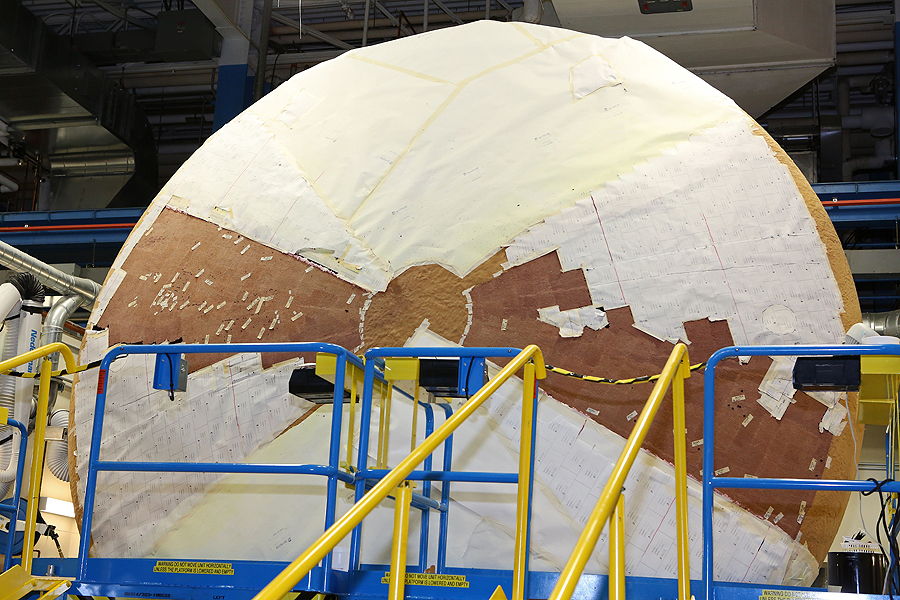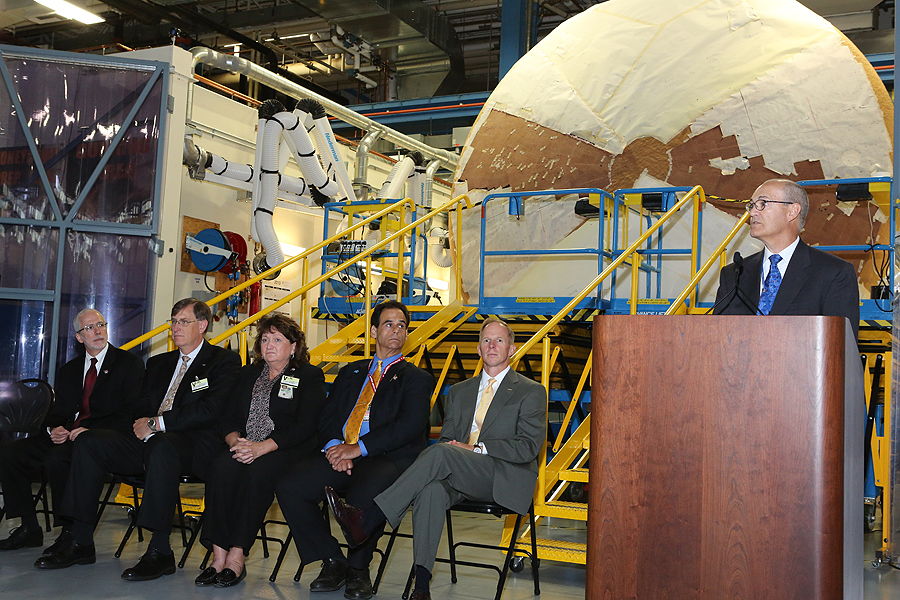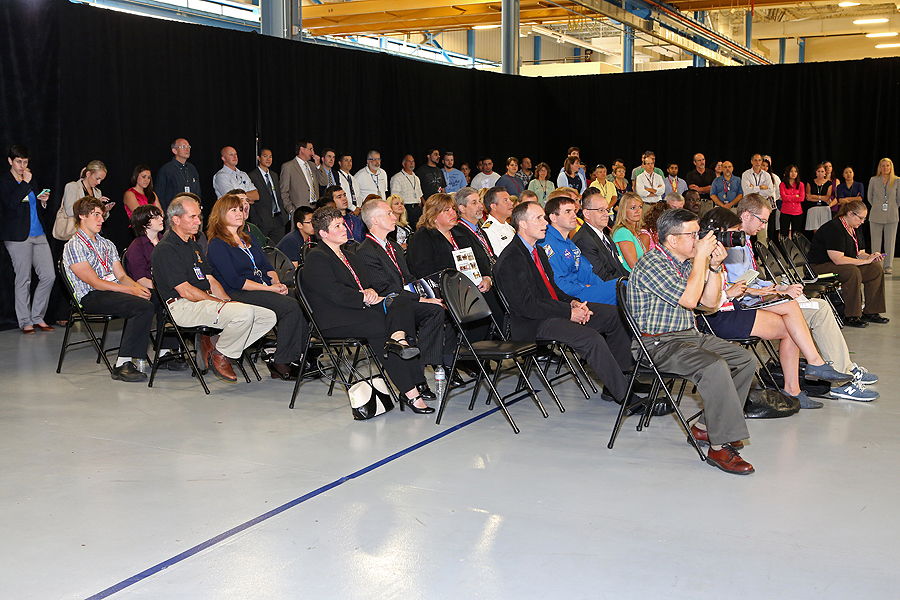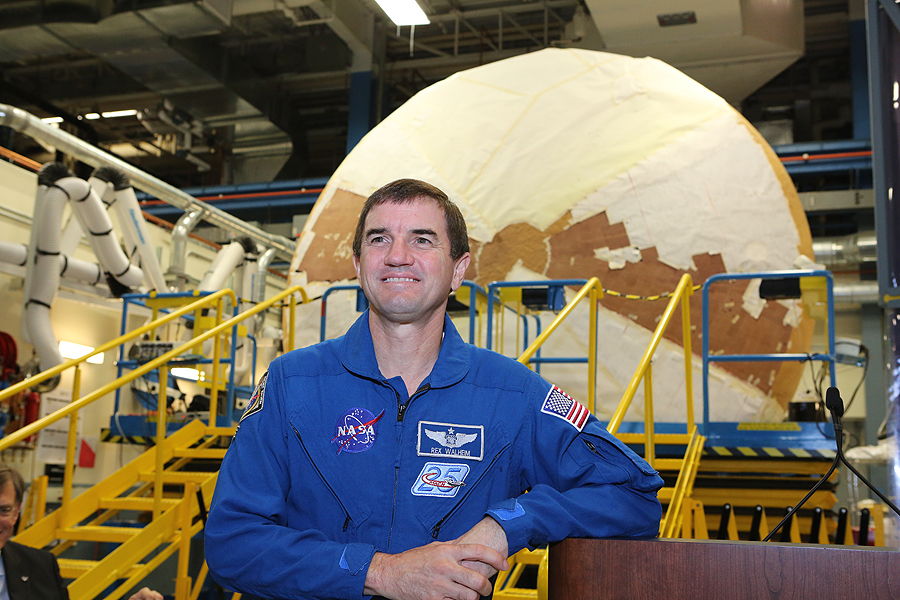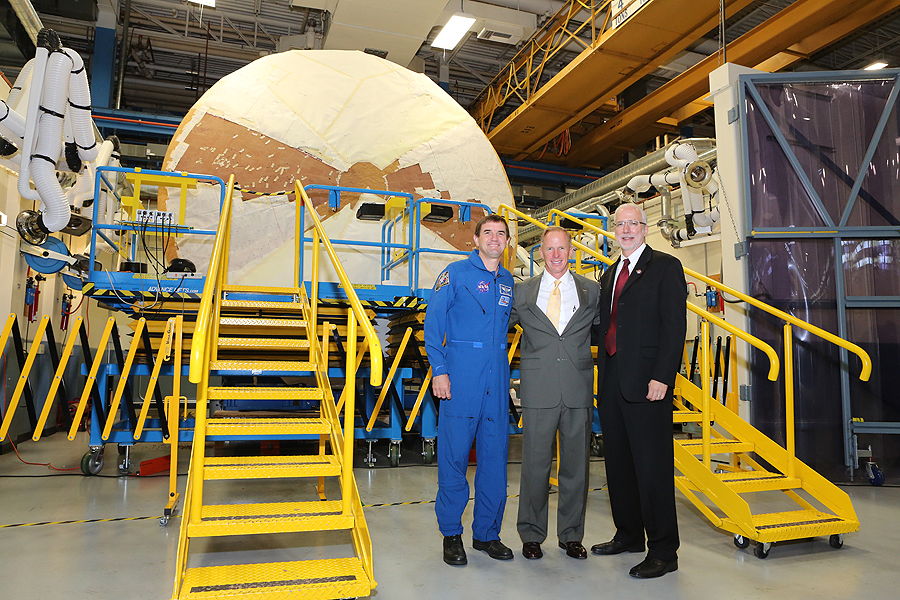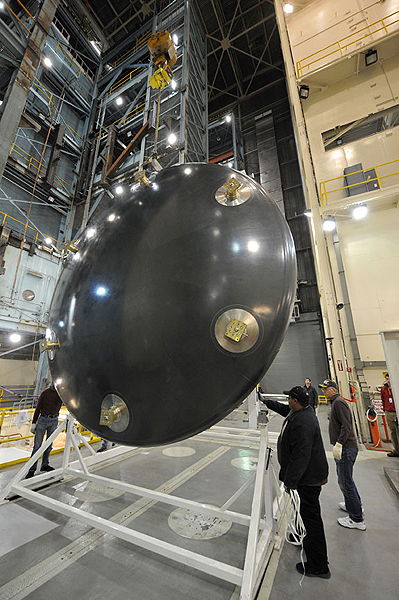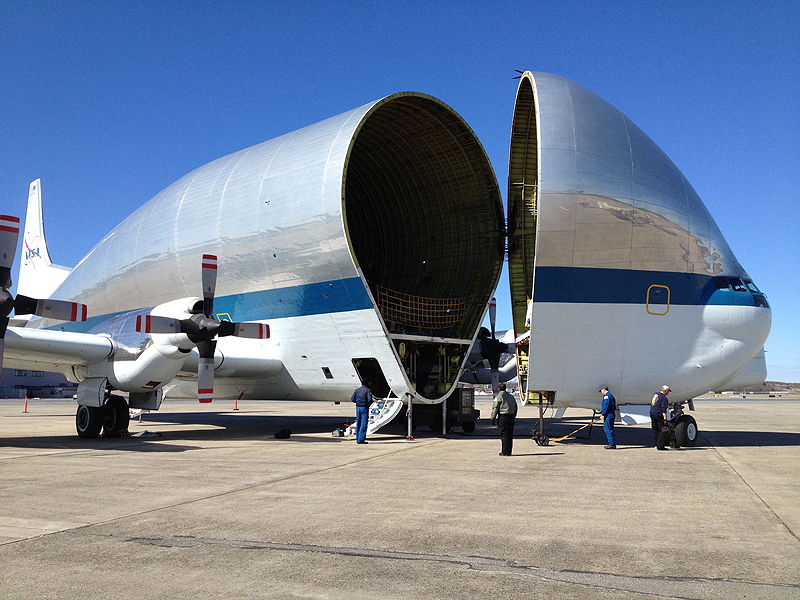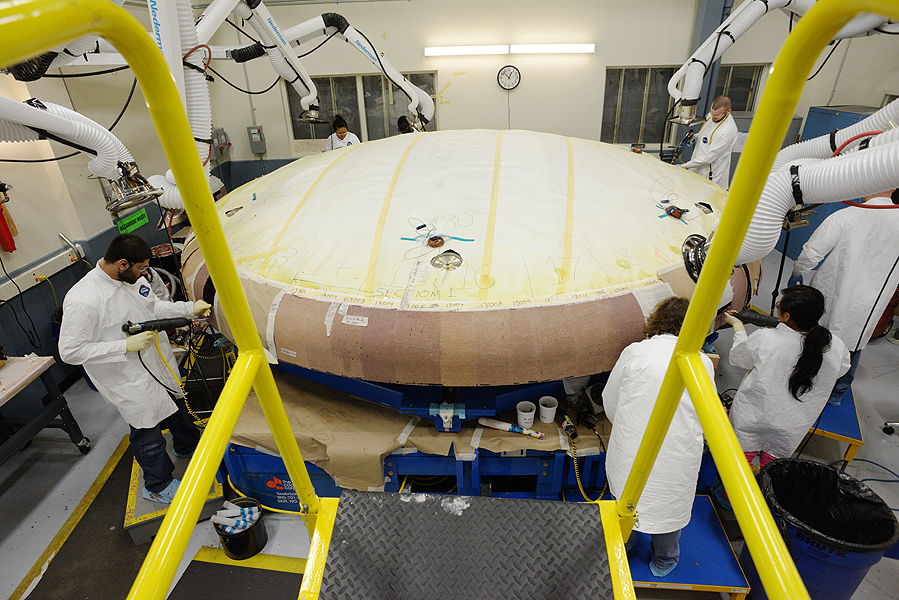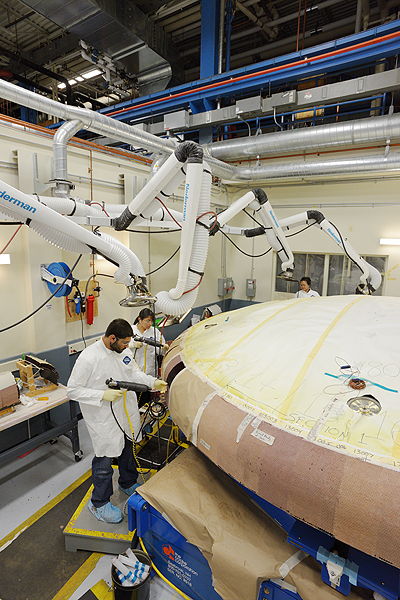Photos: NASA's Orion Spacecraft Heat Shield on Display
Orion Heat Shield on Display
The heat shield for NASA’s Orion Multi-Purpose Crew Vehicle, shown here partly wrapped and mounted on its side, is being coated with a layer of thermal protection material at the Textron Defense Systems plant in Wilmington, Mass. It is the world’s largest heat shield, measuring 16.4 feet in diameter. Textron’s specially formulated ablative material, called Avcoat, is designed to protect the spacecraft and its crew from extreme temperatures during re-entry.
Artist’s Illustration of Orion in Orbit
This artist’s concept shows the Orion crew module during its planned orbital test flight in 2014. Orion is the world’s first interplanetary spacecraft, capable of transporting up to four astronauts beyond low-Earth orbit on long-duration, deep-space missions to destinations such as asteroids, the moon, or Mars.
Orion Heat Shield Panel of Speakers
Speakers during Wednesday’s media viewing included, from left, Orion Program Manager Mark Geyer, NASA Deputy Associate Administrator for Exploration Systems Development Dan Dumbacher, Lockheed Martin Space Systems Program Integration Director Carol Webber, Town of Wilmington Selectman Michael McCoy, Textron Senior Vice President and General Manager Ian Walsh, and Textron Vice President of Program Execution Jeff Picard.
Orion Heat Shield Audience
Nearly 100 guests and journalists gathered at Textron’s Wilmington plant to view Orion’s heat shield.
Astronaut Rex Walheim
Also present at the Textron media event was NASA astronaut Rex Walheim, who is a veteran of three space shuttle flights aboard Atlantis — STS-110, STS-122, and STS-135, which was the 135th and final mission of NASA’s space shuttle program. Walheim currently serves as chief of the Exploration Branch of the Astronaut Office, where he works as the astronaut representative to the Orion program.
Group Photo with Orion Heat Shield
Astronaut Rex Walheim, Textron Senior VP Ian Walsh, and Orion Program Manager Mark Geyer pose in front of the Orion heat shield. The heat shield is not designed to be reusable — for each mission a new shield structure will have to be built by Lockheed Martin and then shipped to Textron for the Avcoat application.
Orion Heat Shield Substructure
The skin and titanium support skeleton of Orion’s heat shield were assembled at Lockheed Martin’s Waterton Facility near Denver, Colo., and then flown to Textron Defense Systems in March aboard NASA’s Super Guppy cargo plane.
Breaking space news, the latest updates on rocket launches, skywatching events and more!
Super Guppy Aircraft
NASA’s Super Guppy cargo aircraft landed at Hanscom Air Force Base near Boston on March 27 to deliver Orion’s heat shield. It is the only plane that can easily accommodate the shield’s size. Its cargo compartment is 25 feet tall, 25 feet wide, and 111 feet long. The Super Guppy can carry a maximum payload of more than 26 tons.
Workers with the Heat Shield (Side View)
About 1,100 pounds of Avcoat material will be applied to the heat shield, the layer’s thickness ranging from 1 to 2 inches. The total weight of the finished heat shield, including its substructure and Avcoat layer, is about 4,000 pounds.
Workers with the Heat Shield (Top View)
A team of Textron technicians is shown covering Orion’s heat shield with the company’s proprietary Avcoat ablative material. They accomplish this by manually “gunning,” or injecting, the material into the approximately 330,000 individual cells of the fiberglass honeycomb structure attached to the heat shield.
Workers with the Heat Shield (Half View)
After each “gunning” cycle, the heat shield is heated to help cure the Avcoat material inside the honeycomb cells.
Imelda B. Joson is a veteran astrophotographer, as well as an eclipse chaser and world traveler. With her husband, Edwin Aguirre, she has organized, led and/or participated in 11 solar eclipse expeditions in North America, Asia and Africa. The pair also conceptualized and created National Astronomy Week, an event that celebrates and publicizes astronomy in the Philippines.
